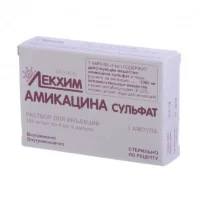Description
Alvobak (Ceftriaxone) Powder for Solution for Injections 1g – 1 Vial
Composition:
Each vial contains 1g of ceftriaxone sodium.
Mechanism of Action:
Ceftriaxone, the active ingredient in Alvobak, inhibits bacterial cell wall synthesis, resulting in bacterial death. It exhibits a broad spectrum of activity against both Gram-positive and Gram-negative bacteria.
Pharmacological Properties:
Alvobak exerts its antibacterial effects by interfering with the synthesis of the bacterial cell wall, leading to bacterial lysis and death. It demonstrates activity against a wide range of pathogens, making it effective in various infections.
Indications for Use:
Alvobak is indicated for the treatment of bacterial infections such as respiratory tract infections, skin and soft tissue infections, urinary tract infections, and more. It should be used as prescribed by a healthcare provider.
Contraindications:
Alvobak should not be used in individuals with a known allergy to ceftriaxone or other cephalosporins. Patients with a history of hypersensitivity reactions to these antibiotics should avoid Alvobak.
Side Effects:
Common side effects of Alvobak may include gastrointestinal disturbances, allergic reactions, and injection site reactions. Patients should seek medical attention if they experience severe or persistent side effects.
Usage Instructions:
Alvobak is typically administered intravenously or intramuscularly once or twice daily. The dosage and duration of therapy should be determined by a healthcare provider based on the specific condition being treated.
Benefits Compared to Analogues:
Alvobak offers the advantage of a broad spectrum of antibacterial activity, making it effective against a wide range of pathogens. Its once or twice daily dosing regimen enhances patient compliance and convenience compared to some analogues.
Suitable Patient Groups:
Alvobak is suitable for use in various patient populations, including adults, children, and the elderly. Dosage adjustments may be necessary based on age, weight, and renal function.
Storage Conditions and Shelf Life:
Alvobak should be stored according to the manufacturer’s instructions, typically at room temperature away from moisture and light. The shelf life of Alvobak should be checked before use, and expired products should be discarded properly.
Packaging Description:
Alvobak is supplied as a powder for solution in a single-dose vial containing 1g of ceftriaxone sodium. The vial should be reconstituted with the appropriate diluent before administration.
Clinical Evidence and Proven Effectiveness:
Studies have demonstrated the efficacy of ceftriaxone, the active ingredient in Alvobak, in treating various bacterial infections. Clinical trials have shown high success rates and low incidence of adverse effects. Notably, a study in Clinical Infectious Diseases highlighted the effectiveness of ceftriaxone in complicated urinary tract infections.





